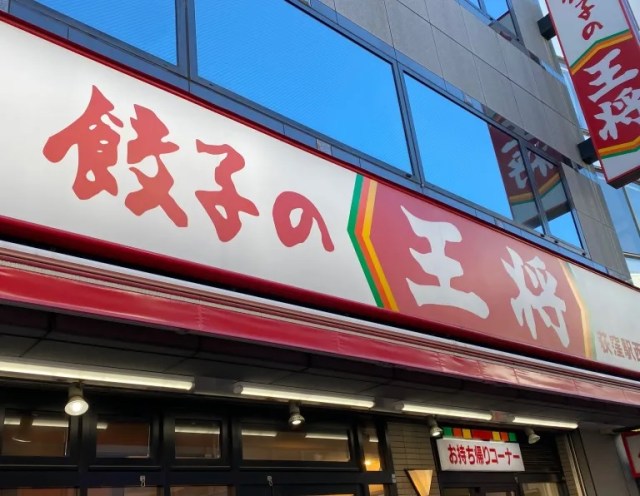
Taste-testing the new and old gyoza at Ohsho.
Japanese restaurant Ohsho is Japan’s most popular gyoza chain. It’s so heavily associated with the pan-fried dumplings that the chain’s official name is actually Gyoza no Ohsho, or “Ohsho of the Gyoza.”
So it was a very big deal this week when Ohsho changed its gyoza recipe.
As very big gyoza fans, we were curious to see what would happen to Ohsho’s marque dish. Unfortunately, a proper side-by-side comparison wasn’t going to be feasible, since gyoza are at their most delicious right out of the wok. So instead we did the next best thing and sent our Japanese-language reporter Takashi Harada to eat Ohsho gyoza two days in a row, on both the last day for the old recipe and the first day for the new one. To eliminate as many variables as possible, he even went to the same restaurant at the same time (right after opening) on both days, and ordered the exact same thing: the 935-yen (US$6.45) gyoza teishoku/gyoza set meal, which includes 12 gyoza.
Sitting down for one final old Ohsho gyoza meal, Takashi’s taste buds were greeted like an old friend. The skin has a light crispness, and as soon as you bite through it you’re met with a pronounced and spreading garlic sensation, followed by the taste of ginger and the natural sweetness of cabbage.
The secret to Ohsho’s success with customers of all ages and walks of life has been how well-balanced the flavor of their gyoza was. That balance also means the gyoza go great with any and all of the standard condiments provided for them, so depending on how much sauce, vinegar, black pepper, or rayu chili oil you use, you can create a range of flavors in order to suit your individual tastes. The superb balance of Ohsho’s gyoza also means they pair just as perfectly with a bowl of steamed white rice as they do a frosted mug of draft beer.
When Takashi went back the next day, he saw a sign had been placed in front of the restaurant’s entrance, announcing “Not just garlic! By making better use of ginger, our gyoza will become more delicious.”
Once again, he ordered the gyoza teishoku, the price for which hasn’t changed.
Visually, he couldn’t spot any difference between the new gyoza and the old ones at this point.
He took a bite, and didn’t immediately notice a shocking difference in flavor. He could clearly taste that there was a stronger ginger taste than before, but not so much that you’d go so far as to call these “ginger gyoza.”
▼ Old gyoza (top) and new gyoza (bottom)
Most importantly, Takashi felt that the new gyoza are still delicious. As he continued eating, though, he did find one clear difference, in his mind, between the two: the new gyoza have a stronger overall flavor in and of themselves. As mentioned above, Takashi felt like Ohsho’s old gyoza could be greatly influenced by the mix of condiments you add. With the new ones, though, he feels like the flavor of the gyoza themselves isn’t so easily altered, and he was quite happy eating the new ones with no sauce at all.
So Takashi is just as happy to keep going to Ohsho for his gyoza fix as he ever was, and even if you happen to not be a fan of the new recipe, there are lots of other great things to eat there too.
Photos © SoraNews24
● Want to hear about SoraNews24’s latest articles as soon as they’re published? Follow us on Facebook and Twitter!
[ Read in Japanese ]

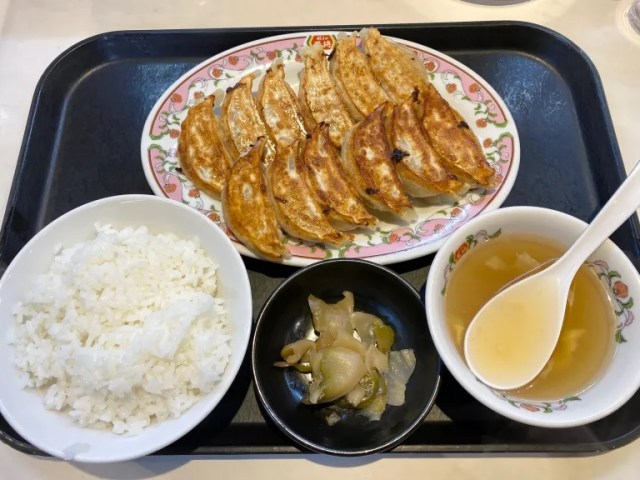
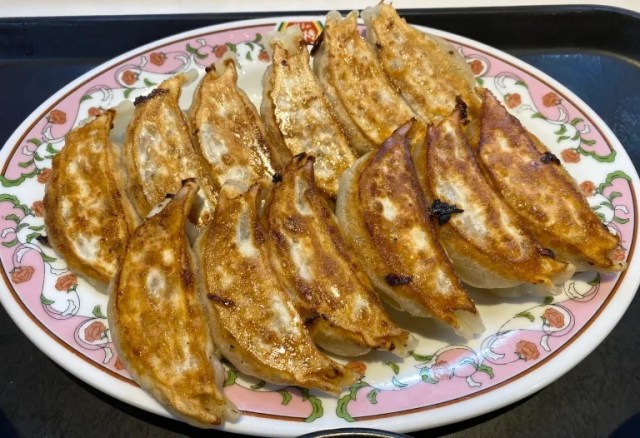
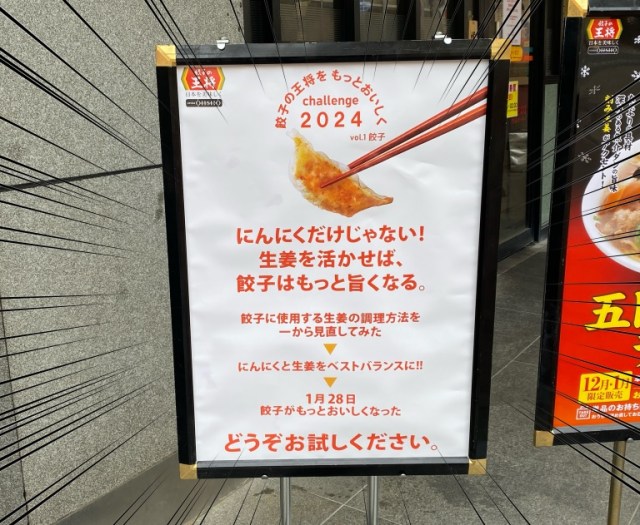
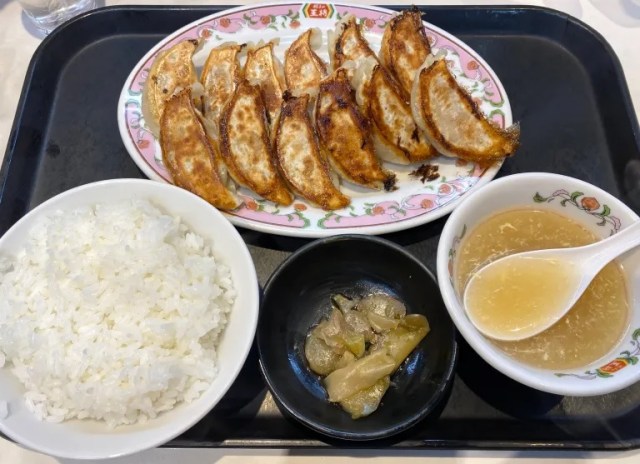
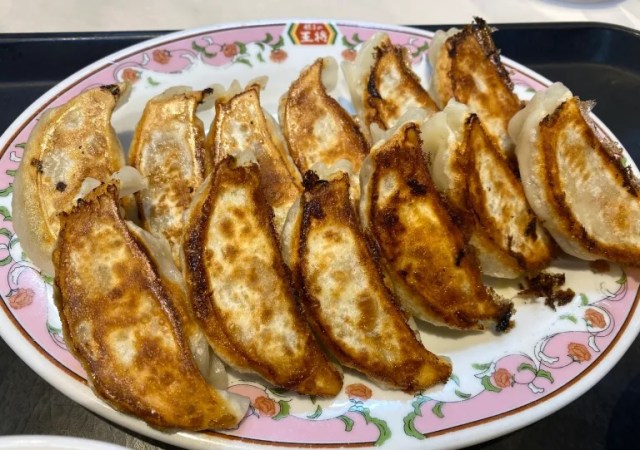
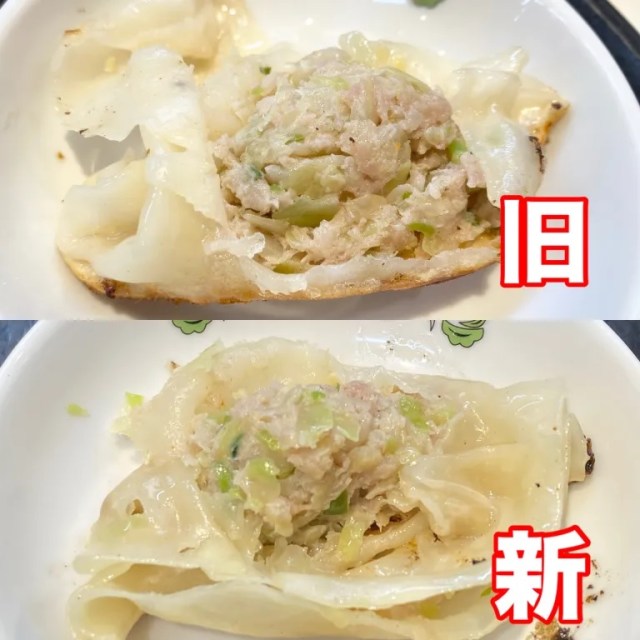
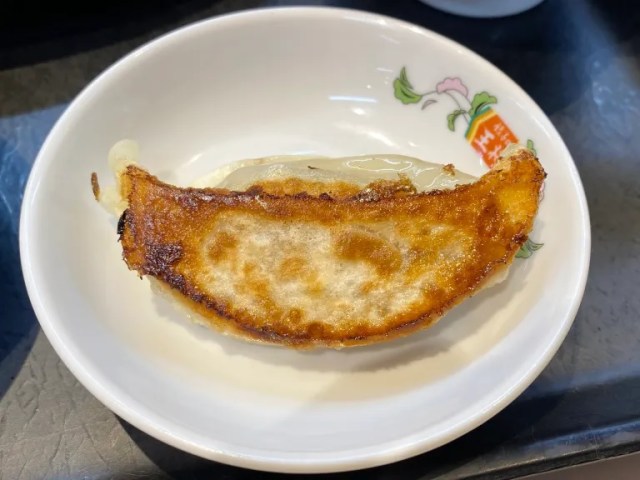
 We try Ajinomoto’s new frozen gyoza, come up with a dangerously delicious way to eat them
We try Ajinomoto’s new frozen gyoza, come up with a dangerously delicious way to eat them Who made the tastiest gyoza in 2021? We decide on our favourite pot stickers
Who made the tastiest gyoza in 2021? We decide on our favourite pot stickers Japan’s Gyoza Filling Curry — Combination of two great foods reminds us of another great food
Japan’s Gyoza Filling Curry — Combination of two great foods reminds us of another great food Michelin Guide gyoza in Tokyo: Worthy of the accolade?
Michelin Guide gyoza in Tokyo: Worthy of the accolade? Croissant gyoza: Pie-like dumplings take Japan by storm
Croissant gyoza: Pie-like dumplings take Japan by storm How to order snacks on a Shinkansen bullet train in Japan
How to order snacks on a Shinkansen bullet train in Japan Demon Slayer: Kimetsu no Yaiba gets new roller coaster attractions and food at Universal Studios Japan
Demon Slayer: Kimetsu no Yaiba gets new roller coaster attractions and food at Universal Studios Japan Nintendo history you can feel – Super NES, N64, and GameCube controllers become capsule toys
Nintendo history you can feel – Super NES, N64, and GameCube controllers become capsule toys New Nintendo Lego kit is a beautiful piece of moving pixel art of Mario and Yoshi【Photos】
New Nintendo Lego kit is a beautiful piece of moving pixel art of Mario and Yoshi【Photos】 Japan’s new difficult-to-drink-from beer glass protects your liver, but it’s a brutal experience
Japan’s new difficult-to-drink-from beer glass protects your liver, but it’s a brutal experience A visit to the best UFO catcher arcade in the universe!
A visit to the best UFO catcher arcade in the universe! To combat declining birth rate, Japan to begin offering “Breeding Visas” to foreigners
To combat declining birth rate, Japan to begin offering “Breeding Visas” to foreigners Tokyo Station’s perfect breakfast spot might just be this izakaya Japanese-style pub
Tokyo Station’s perfect breakfast spot might just be this izakaya Japanese-style pub Sex doll sharing service shut down by Chinese authorities
Sex doll sharing service shut down by Chinese authorities High-fashion Totoro cuddle purse is like an elegant stroll in the forest【Photos】
High-fashion Totoro cuddle purse is like an elegant stroll in the forest【Photos】 Hello, cosmetics! Clinique teams up with Hello Kitty this summer for first-time collaboration
Hello, cosmetics! Clinique teams up with Hello Kitty this summer for first-time collaboration “The most Delicious Cup Noodle in history” – Japan’s French Cup Noodle wins our heart【Taste test】
“The most Delicious Cup Noodle in history” – Japan’s French Cup Noodle wins our heart【Taste test】 Starbucks releases a cute Frappuccino and Unicorn Cake…but not in Japan
Starbucks releases a cute Frappuccino and Unicorn Cake…but not in Japan Kyoto Tower mascot termination reveals dark side behind cute Japanese characters
Kyoto Tower mascot termination reveals dark side behind cute Japanese characters McDonald’s Japan’s Soft Twist Tower: A phantom ice cream only sold at select branches
McDonald’s Japan’s Soft Twist Tower: A phantom ice cream only sold at select branches Yabai Ramen: What makes this Japanese ramen so dangerous?
Yabai Ramen: What makes this Japanese ramen so dangerous? Finally! Nintendo Japan expands Switch 8-bit controller sales to everybody, Online member or not
Finally! Nintendo Japan expands Switch 8-bit controller sales to everybody, Online member or not Japanese government wants to build luxury resorts in all national parks for foreign tourists
Japanese government wants to build luxury resorts in all national parks for foreign tourists 10 things you should buy at 7-Eleven in Japan
10 things you should buy at 7-Eleven in Japan Studio Ghibli releases anime heroine cosplay dresses that are super comfy to wear
Studio Ghibli releases anime heroine cosplay dresses that are super comfy to wear Woman charged for driving suitcase without a license in Osaka
Woman charged for driving suitcase without a license in Osaka Studio Ghibli unveils My Neighbour Totoro miniature house model
Studio Ghibli unveils My Neighbour Totoro miniature house model Kyoto experiencing problems with foreign tourists not paying for bus fares, but not on purpose
Kyoto experiencing problems with foreign tourists not paying for bus fares, but not on purpose Fighting mild hunger with a Japanese soda that turns into jelly in the stomach【Taste test】
Fighting mild hunger with a Japanese soda that turns into jelly in the stomach【Taste test】 Studio Ghibli’s Howl’s Moving Castle tapestry unveiled in Japan for first time
Studio Ghibli’s Howl’s Moving Castle tapestry unveiled in Japan for first time McDonald’s new Happy Meals offer up cute and practical Sanrio lifestyle goods
McDonald’s new Happy Meals offer up cute and practical Sanrio lifestyle goods Sales of Japan’s most convenient train ticket/shopping payment cards suspended indefinitely
Sales of Japan’s most convenient train ticket/shopping payment cards suspended indefinitely Sold-out Studio Ghibli desktop humidifiers are back so Totoro can help you through the dry season
Sold-out Studio Ghibli desktop humidifiers are back so Totoro can help you through the dry season Japanese government to make first change to romanization spelling rules since the 1950s
Japanese government to make first change to romanization spelling rules since the 1950s Foreigner’s request for help in Tokyo makes us sad for the state of society
Foreigner’s request for help in Tokyo makes us sad for the state of society Ghibli founders Toshio Suzuki and Hayao Miyazaki contribute to Japanese whisky Totoro label design
Ghibli founders Toshio Suzuki and Hayao Miyazaki contribute to Japanese whisky Totoro label design Doraemon found buried at sea as scene from 1993 anime becomes real life【Photos】
Doraemon found buried at sea as scene from 1993 anime becomes real life【Photos】 Tokyo’s most famous Starbucks is closed
Tokyo’s most famous Starbucks is closed Princesses, fruits, and blacksmiths: Study reveals the 30 most unusual family names in Japan
Princesses, fruits, and blacksmiths: Study reveals the 30 most unusual family names in Japan Gyoza ramen! Two of Japan’s best comfort foods in one bowl at innovative restaurant【Taste test】
Gyoza ramen! Two of Japan’s best comfort foods in one bowl at innovative restaurant【Taste test】 Japan now has “Gyoza for Athletes”, thanks to figure skating Olympian Yuzuru Hanyu 【Taste test】
Japan now has “Gyoza for Athletes”, thanks to figure skating Olympian Yuzuru Hanyu 【Taste test】 3 unusual gyoza creations from Tochigi Prefecture, the Japanese capital of dumplings 【Taste Test】
3 unusual gyoza creations from Tochigi Prefecture, the Japanese capital of dumplings 【Taste Test】 Gyoza No Ohsho celebrates birthday with discounts on the weekend of 25 December
Gyoza No Ohsho celebrates birthday with discounts on the weekend of 25 December Gyoza Hot Dog: Japan’s new must-try local street food
Gyoza Hot Dog: Japan’s new must-try local street food Fast-food chain Gyoza no Ohsho’s all-you-can-eat curry made us feel like we fell down a mountain
Fast-food chain Gyoza no Ohsho’s all-you-can-eat curry made us feel like we fell down a mountain We get to be (probably) the first ever to try Nissin Cup Noodle’s latest creation: Gyoza ramen!
We get to be (probably) the first ever to try Nissin Cup Noodle’s latest creation: Gyoza ramen! Time to head north: Tochigi Prefecture’s gyoza-flavored rice topping is nothing short of divine
Time to head north: Tochigi Prefecture’s gyoza-flavored rice topping is nothing short of divine Japanese snack maker develops portable gyoza you can eat anywhere, anytime
Japanese snack maker develops portable gyoza you can eat anywhere, anytime Dumplings that’ll make you pretty! “Gyoza for girls” is the new food trend hitting Japan!
Dumplings that’ll make you pretty! “Gyoza for girls” is the new food trend hitting Japan! Move over, garlic gyoza — it’s time to try squid ink, habanero, seaweed, and taco dumplings
Move over, garlic gyoza — it’s time to try squid ink, habanero, seaweed, and taco dumplings We tried to use our leftover gyoza wrappers to make marshmallow puffs…but it didn’t go to plan
We tried to use our leftover gyoza wrappers to make marshmallow puffs…but it didn’t go to plan We made pan-fried and baked mini apple pies using gyoza dumpling wrappers【SoraKitchen】
We made pan-fried and baked mini apple pies using gyoza dumpling wrappers【SoraKitchen】 Gyoza rice balls are here, and everyone agrees they look awesome, but are they? 【Taste Test】
Gyoza rice balls are here, and everyone agrees they look awesome, but are they? 【Taste Test】 BonAppetour startup lets you cook and dine with Tokyo locals in their homes
BonAppetour startup lets you cook and dine with Tokyo locals in their homes
Leave a Reply